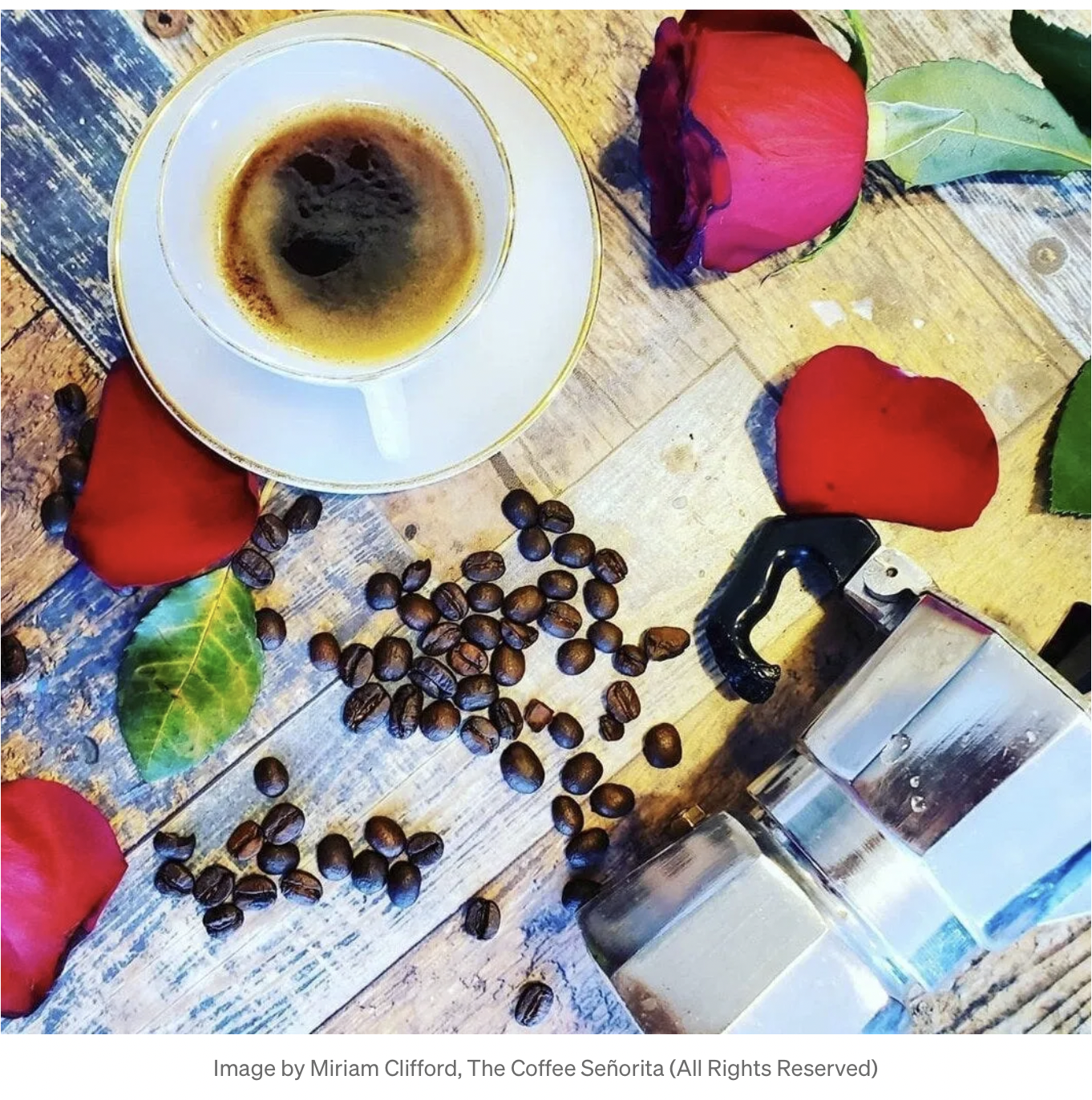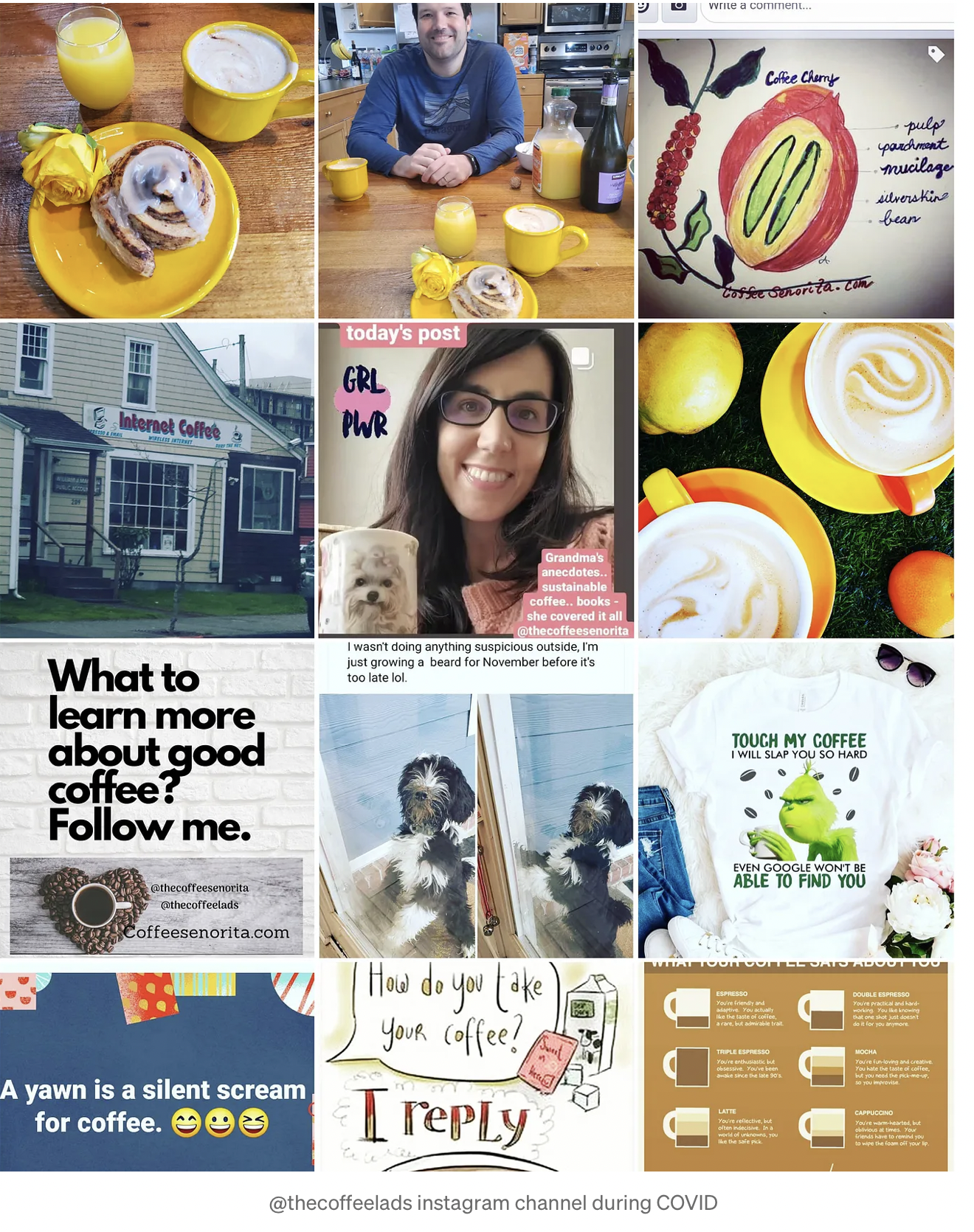A Coffee Journey
I am taking a journey around the world — through coffee. I want to explore how coffee is grown and how artisans make such beautiful products for the world. This journey is dedicated to the coffee farmer.
Hi, I’m Miriam, the Coffee Senorita and I started this publication about coffee as a way to combine two of my passions: writing and coffee. I launched CoffeeSenorita to write about my passion for coffee, with its depth of knowledge based in science, history and art. But its aim is bigger than that.
My hope is that through this project people grow to appreciate the labor of love of farmers, buy coffee more directly from farms and pay fair prices for equitably and sustainably sourced coffee.
My love of coffee started at a young age, when I used to watch my great-grandmother Mima brew cafecito in her little red kitchen. She taught me the way to brew Cuban coffee, using sugar to create the perfect crema. But the most important thing Mima taught me through her coffee ritual was love. Those moments she spent sitting with me and talking about her life, playing dominos, and even telling a few tall tales about her days as a Casino girl — were full of all the wisdom. There were not many things she could take with her from Cuba, but her love of coffee crossed the sea. That is what coffee means to me — love and connection.
I enjoy learning from others in this amazing, welcoming community — of baristas, farmers, roasters, coffee enthusiasts, shop owners, experts, food critiques, fellow writers — and the like. From coffee we can understand the past, such as from accounts of historical coffeehouses that once were centers of thought, spreading new ways of thinking to the current social initiatives centered around this industry. I hope to learn more about this amazing cultural tradition with you!
In this way, through learning the farmer and the consumer are more connected — creating a coffee culture that is united. Being knowledgable of coffee, much like wine, allows us to demand the products we support and understand the intricacies of coffee production, thus appreciate the beautiful products these artisans share and create for the world. In this series, The Coffee Senorita, I hope to learn about coffee with you, and the differences in production between countries, as well as share companies that are doing the right things to bridge the gap between our coffee cultures.
I believe coffee is magical. It connects us in meaningful ways — it teaches us we are all connected.
@thecoffeelads instagram
What can you expect here?
As we learn about the world of coffee and come to appreciate the beauty of its many methods of production, the different climates, varietals, cultures, and ways of life — we grow in appreciation not just for the product, but for the people who bring this coffee to our lives. We can directly connect with farmers online or choose roasteries that create a dialogue with them. We can learn the ways coffee is under-appreciated, and what we can do to make coffee production more equitable, transparent and fair. We can help de-commoditize the coffee industry and create more equitable wages for farmers by understanding the nuances of their aritisanal products and paying fair prices for their products. This idea is not new, it happened in the wine industry.
Rodrigo Flores @rodrigoflores_photo
When I began the journey, I looked at the map below…… The most striking thing is the lack of overlap between coffee production and coffee consumption. Why is this? These two coffee cultures exist in somewhat isolation of each other, without direct connections between cultures. Who can bridges that gap? You, the consumer.
Map of areas that drink and/or grow coffee.
“World Coffee Production and Consumption” by offchance
Looking at the same map, you may ask yourself why many coffee-producing countries have lower consumptions of coffee — a major hurdle to bridging the culture of production and consumption.
Why? Coffee farmers reserve their coffee to ship abroad to maximize their profits — and today, many are still paid only $1 per pound. How can we create equity for farmers? By being willing to pay higher prices for coffee and by educating ourselves about coffee production.
Through learning, we can be mindful of what we buy and provide a better quality of life by paying fair prices and by either importing directly from farmers, or following established practices like Fair Trade, or farmer-led intiatives. We can also support intiatives that protect the environment like shade-grown coffee that protects ecological wonders like the Amazon rainforest by paying farmers fair wages to grow shade-grown coffee products.
My husband Adam is the other half of Coffee Senorita. We met in Grand Central Station, NY while he was finishing school at West Point, and I was at my last semester at Cornell. Our first move together was to Seattle, Washington where our love of coffee began. Having served in the US Army and now working in analytics, he is the regimented side who keeps me on task and ensures we measure our brews carefully!
We hope that you will join us in learning about the rich world of coffee — its history, science, brewing techniques, and most important of all, its amazing story of connection.
There’s a quote we read in a coffee shop when this journey began that comes to mind,
“We don’t have Wifi, pretend its 1995 and talk to each other.”
That is what I hope we achieve at the heart of Coffee Senorita — moments shared over coffee.
Cheers to the love of coffee!





